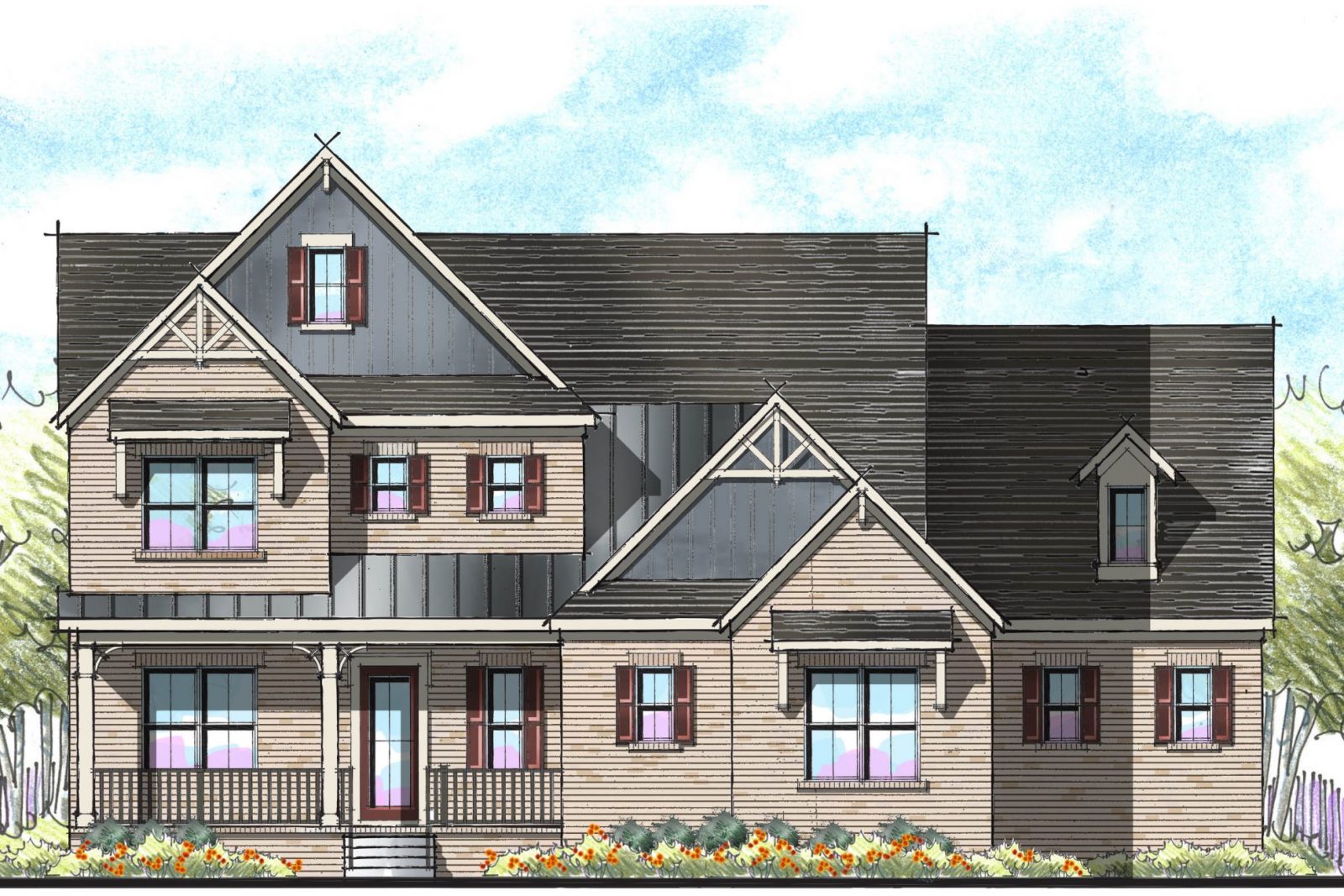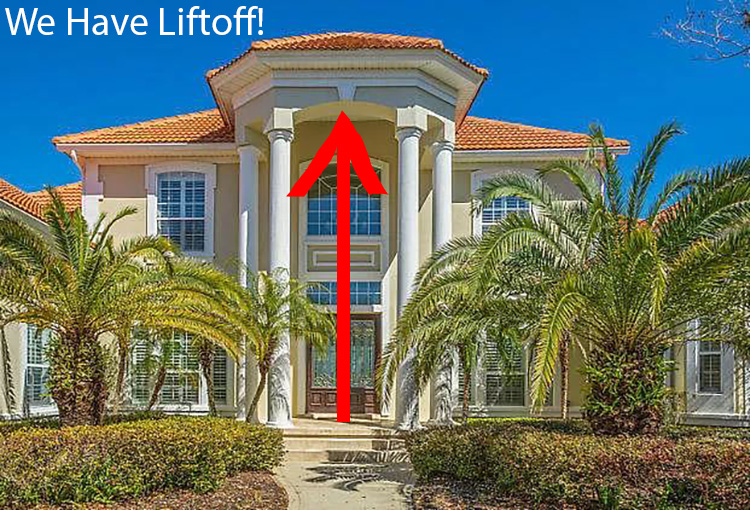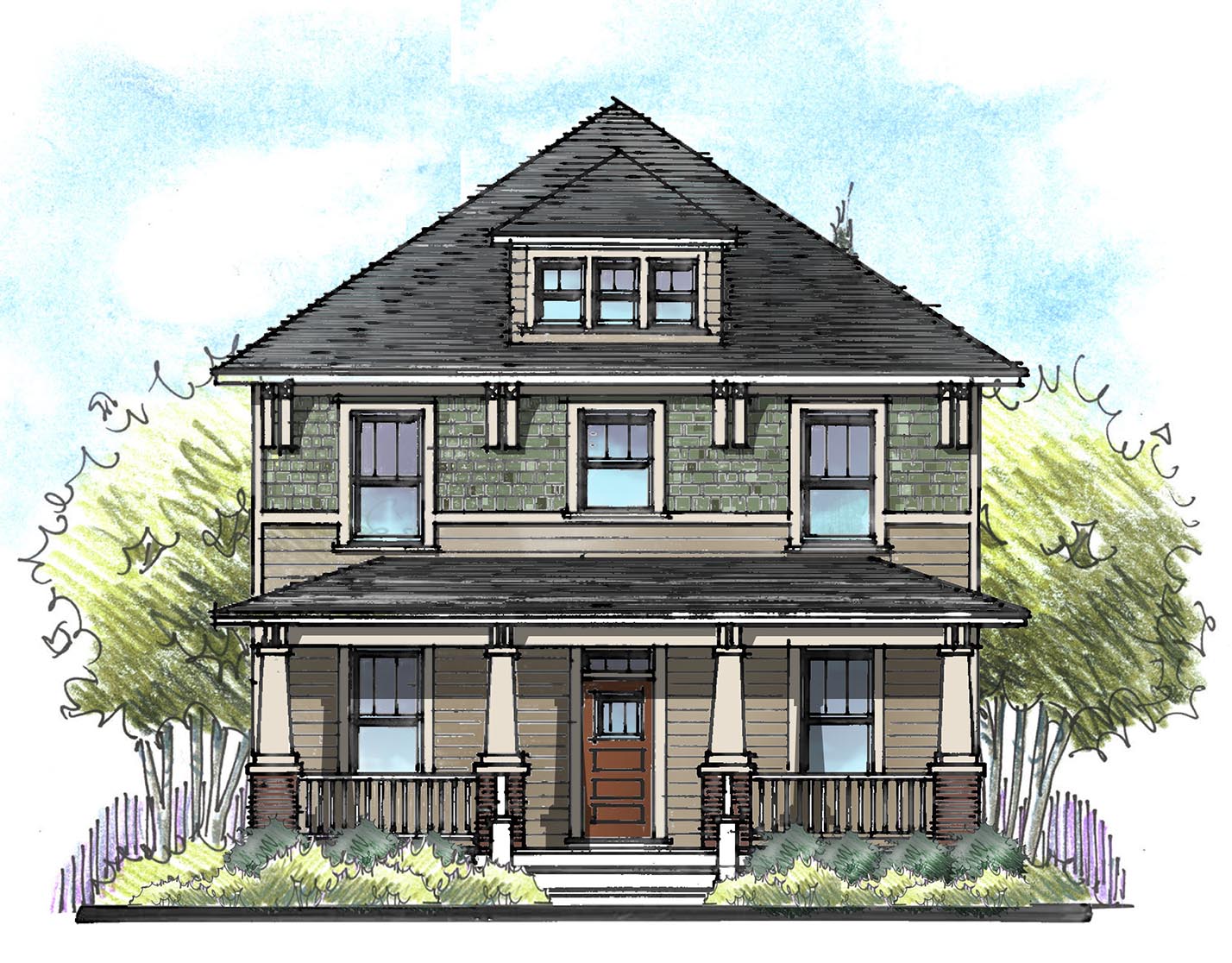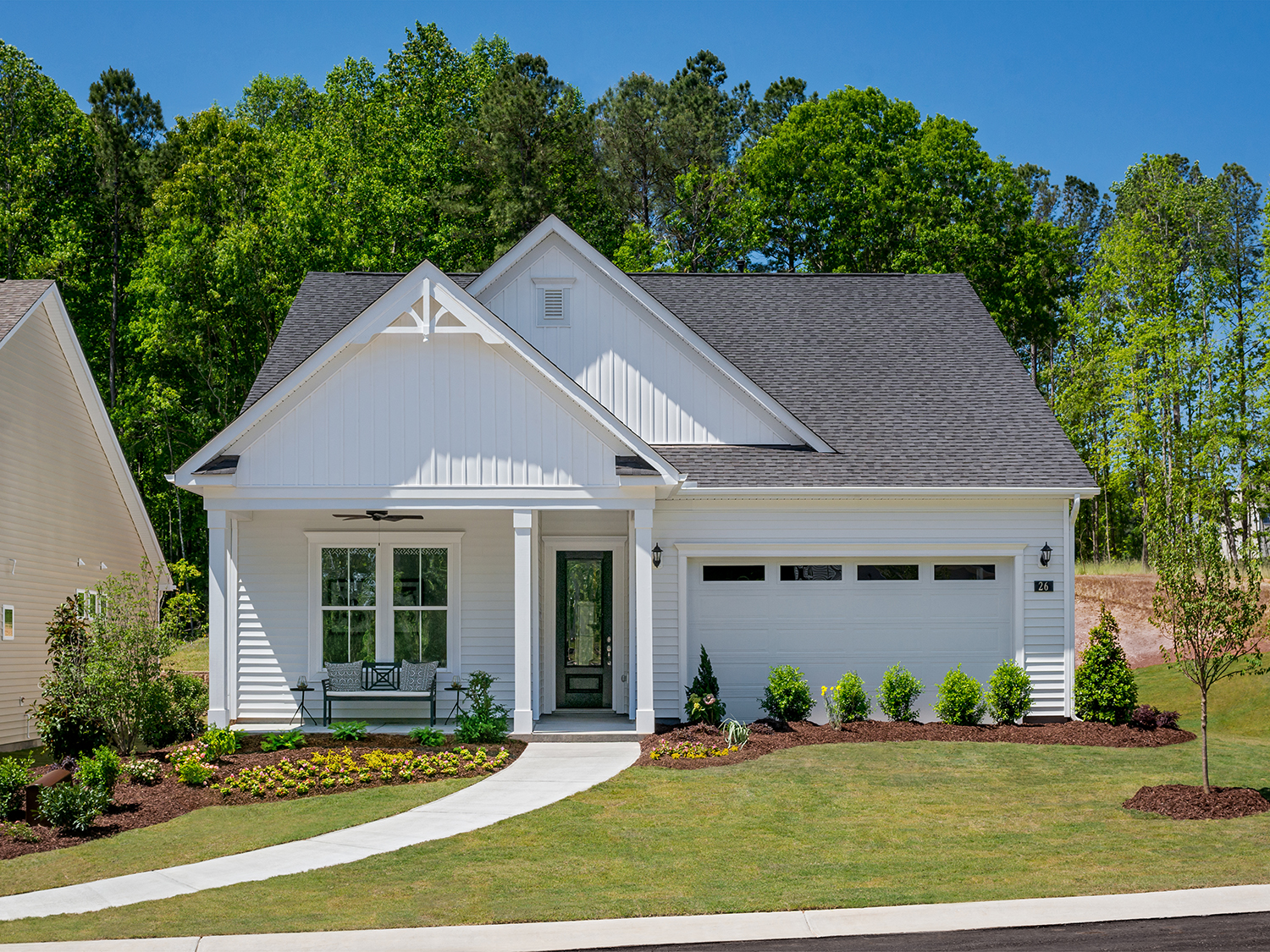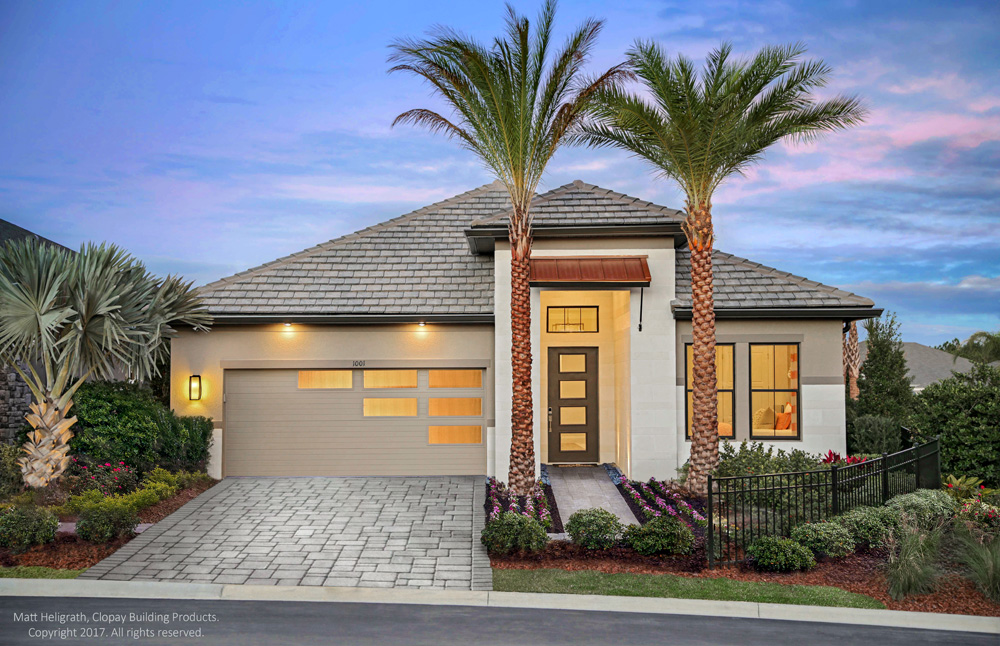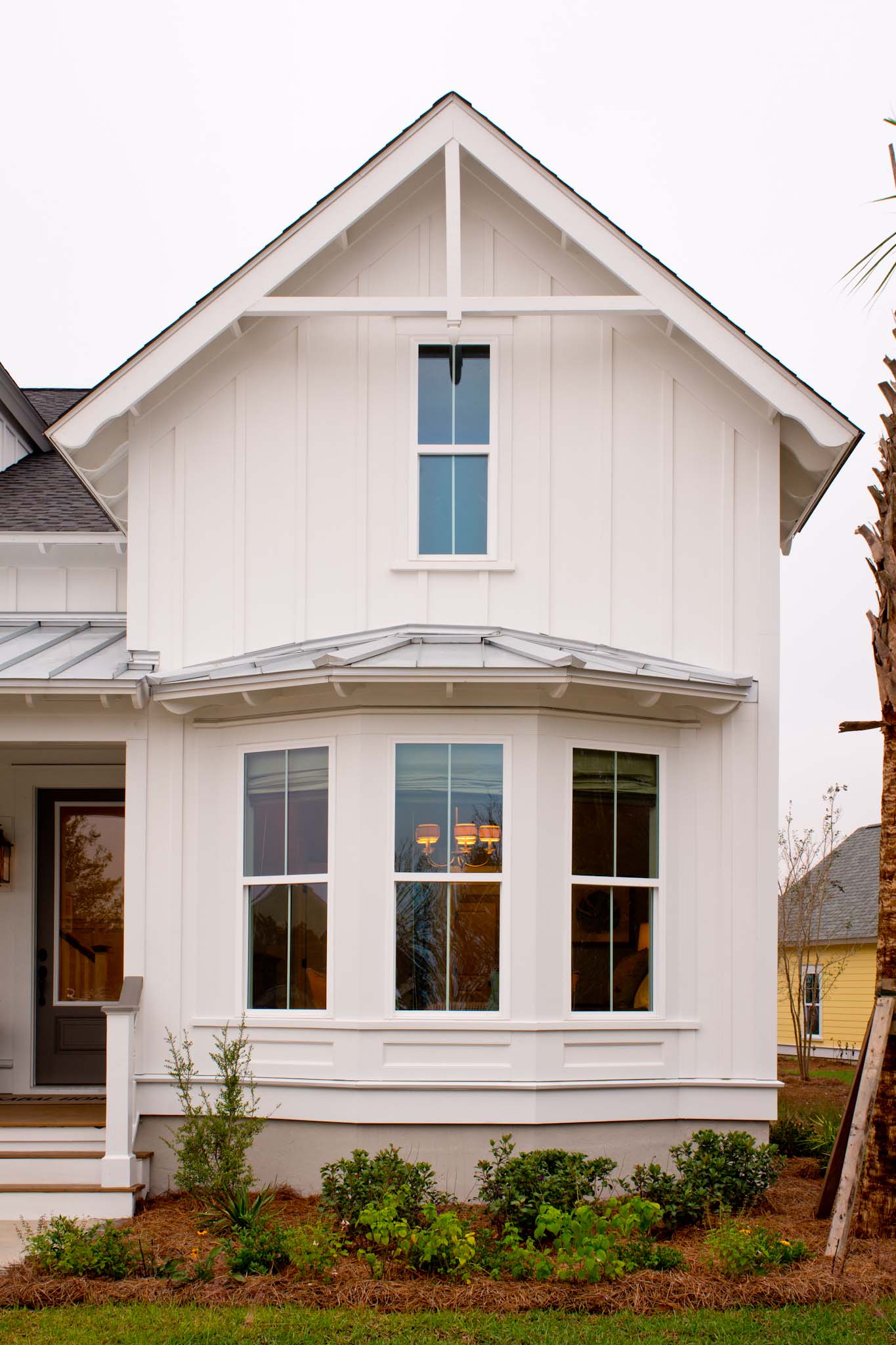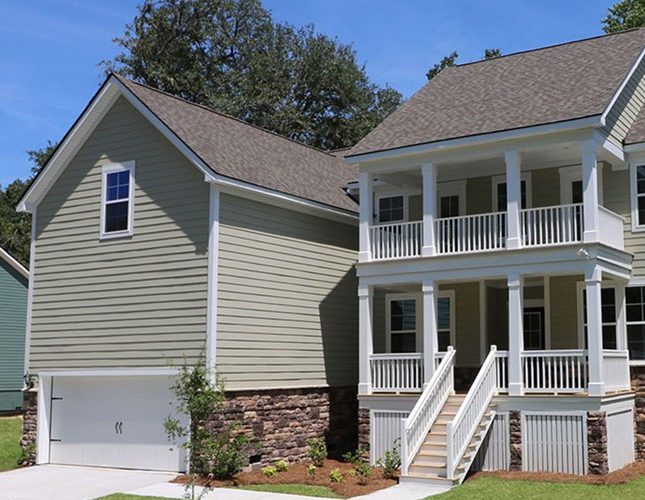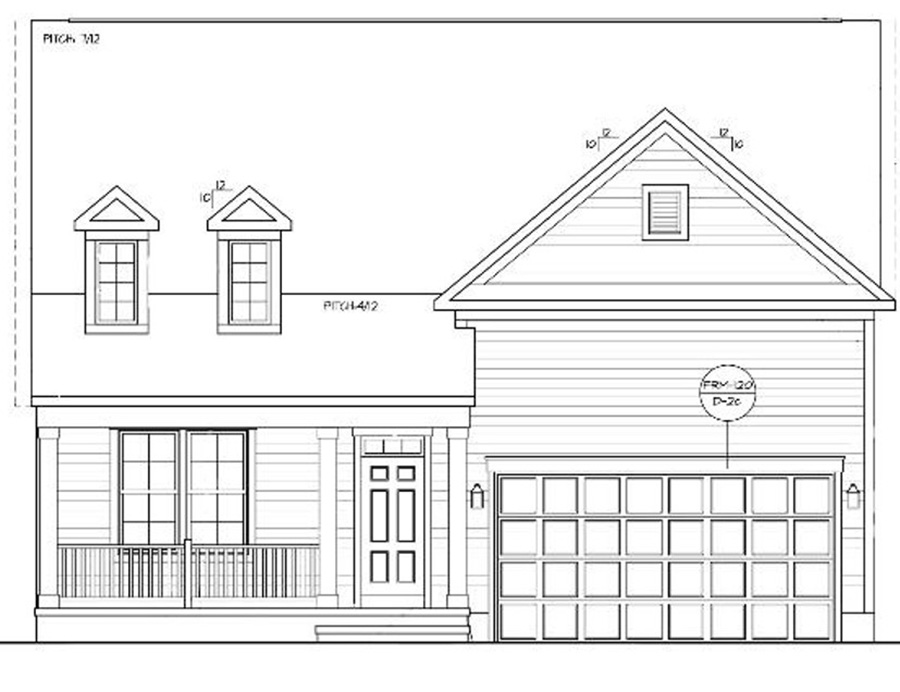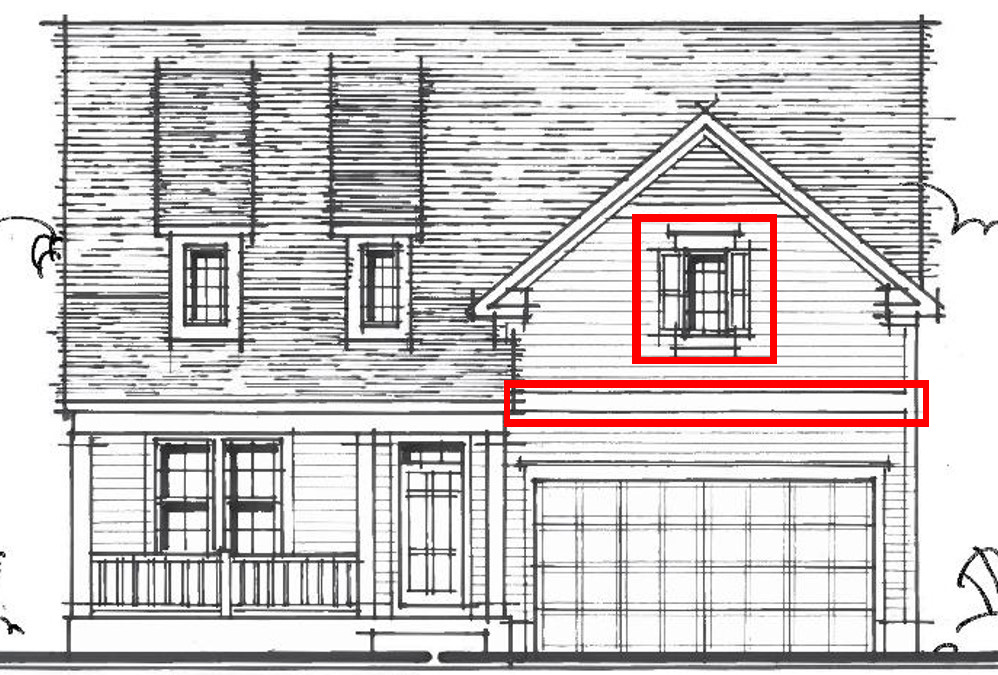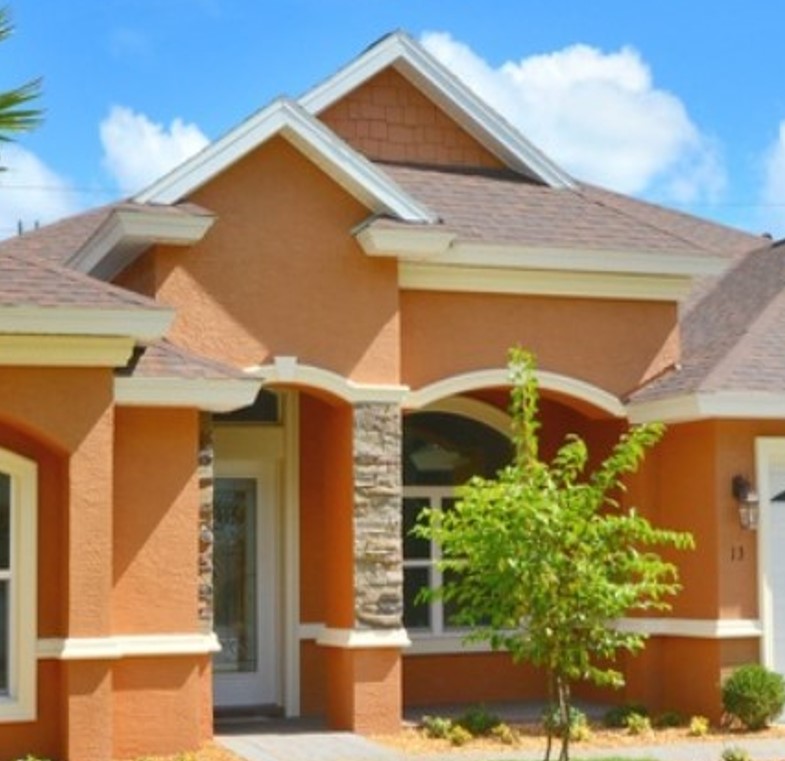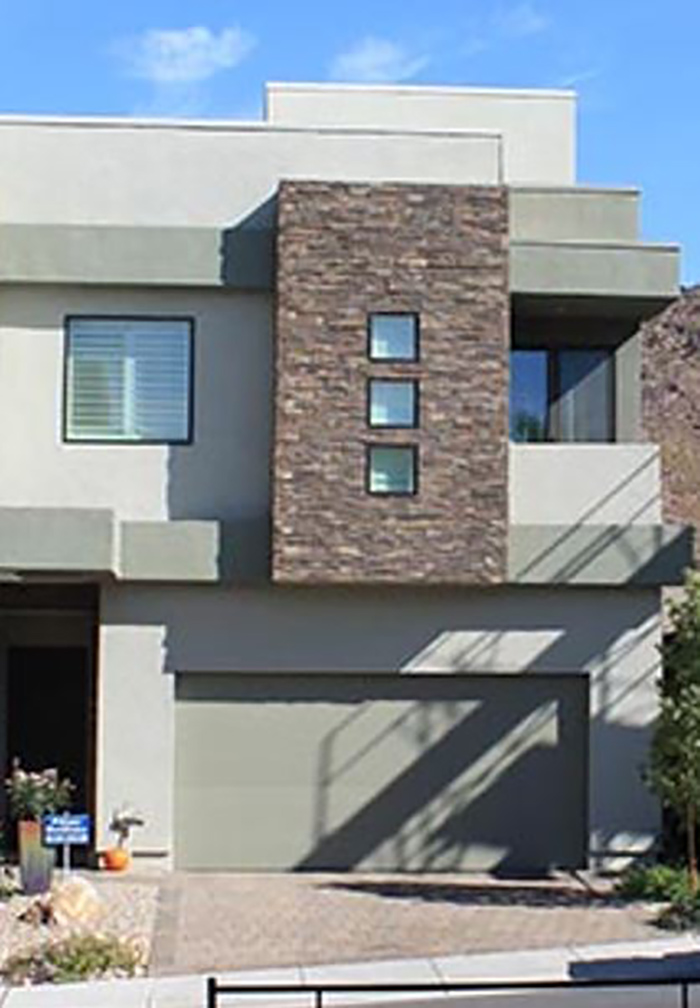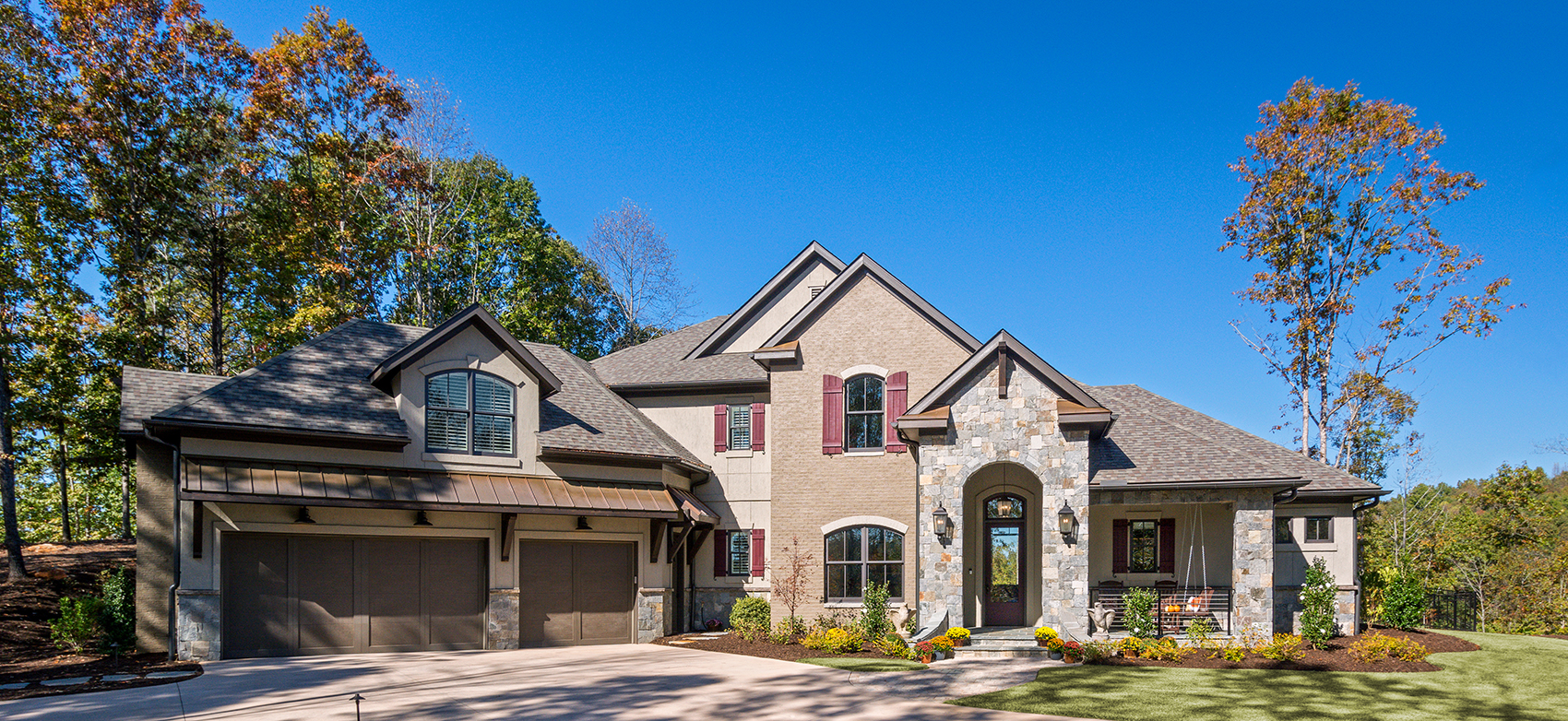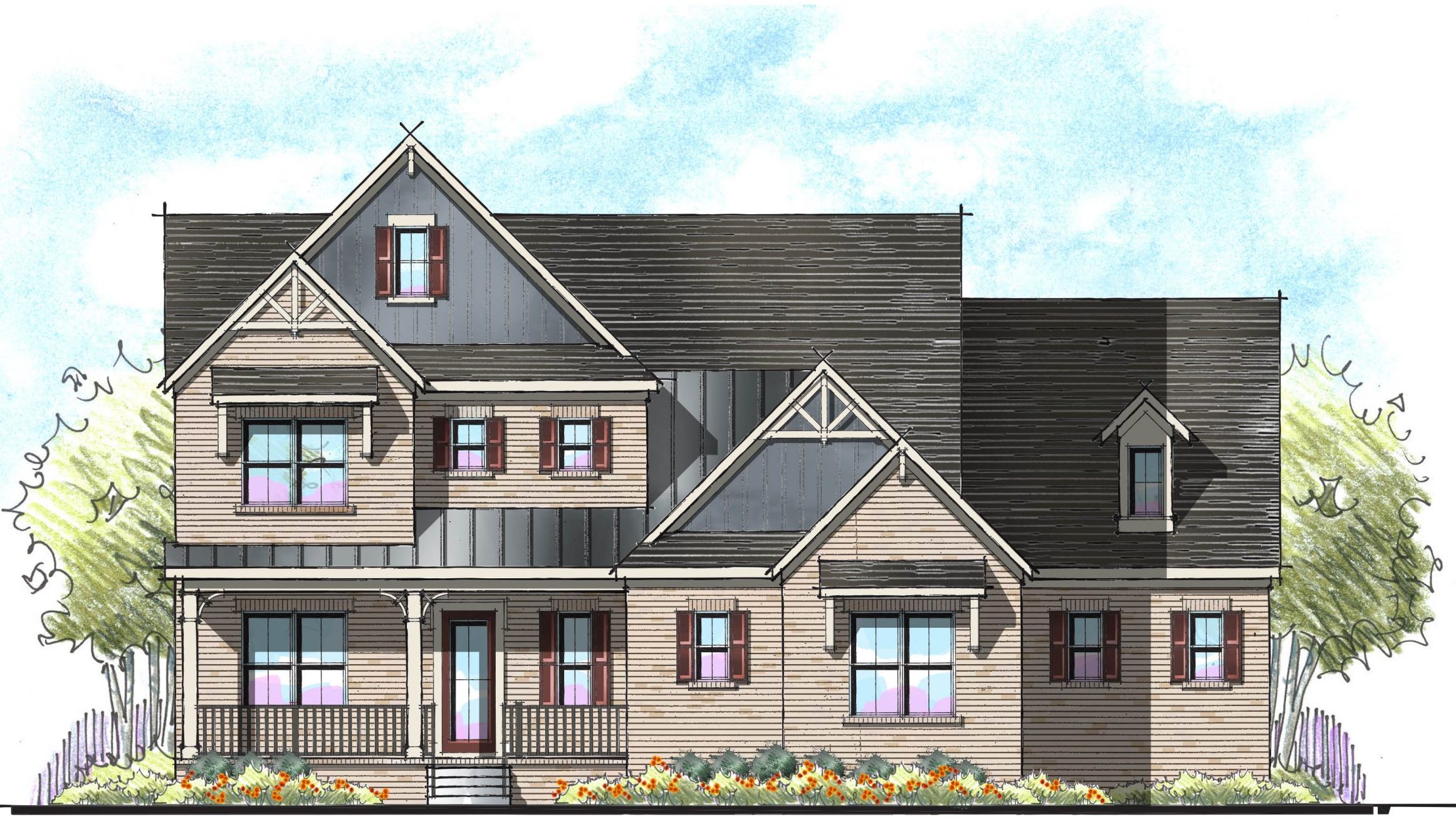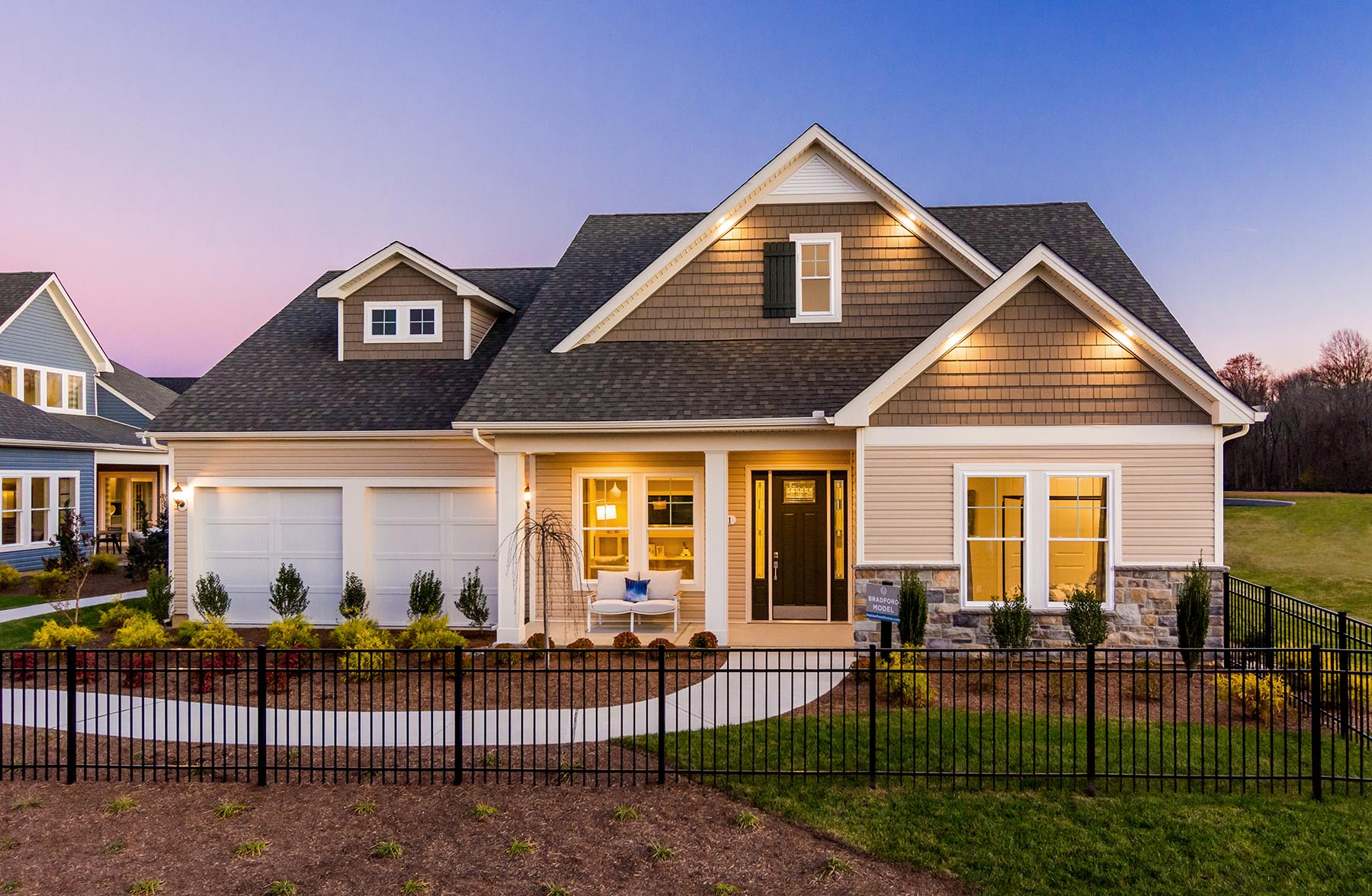When it comes to designing streetscape and elevations, designers are insistent that a design must be authentic in order to sell. On the other hand, the builder trying to build those streetscapes and elevations is trying to figure out how to afford authenticity.
Sounds like an impasse. But what if you could have your cake and eat it to – authenticity that doesn’t cost more. Probably sounds too good to be true, but Tom Devine along with John Guilliams and Sue Wadden tackled this seemingly contradictory goal during their IBSx webinar. You can view the speech on demand on the IBSx website (https://www.buildersshow.com/Search/EducationSession.aspx?id=1414077)
To create authenticity in elevations, it means a return to the basics of elevation design:
- Parts in Proportion
- Discovering the Shapes
- The Nature of Materials
- The Devil is in the details
Parts in Proportion
Elevations should be human in scale. This starts with the entry element. Remember the two-story rocket ship entry porticos that dwarf humans? Bigger isn’t always better!
If you want to create a welcoming entry, consider a porch. For porches to be welcoming, they need to function. That is, you need a porch deep enough for furniture. And the columns that support the porch roof? They need to look like they can support the home and reinforce the style of the home. We don’t want to see toothpicks supporting a Craftsman elevation.
Discovering the Shapes
The design elements used to create a compelling elevation include roof pitch, fenestration, and massing.
Roof pitch can help determine and reinforce a style. Shallower roof pitches are appropriate for styles like Spanish or Tuscan where steeper roof pitches work well with French Country and Farmhouse. Naturally, there are regional variations, such as the south’s preference for low pitches because of wind loads and the north preferring steeper pitches because of snow loads.
Additionally, the pitch of the roof can be a powerful visual tool – leading the eye (hopefully) to the front entry. Even a home with all hip roofs and level fascias can have a raised roof line at the entry.
Fenestration (windows) play a critical role in creating patterns, reinforcing a style, directing the eye and of course – proportion. Do the windows, their style, pattern, and placement support the style of the home? Or do they look haphazardly selected and placed? If there are a pair of shutters, are they each one half the window size? The first-floor windows are typically taller than the second-floor windows. Note below how the windows reinforce the vertical nature of the home.
Last but not at all least is the role of massing. Are the design elements in proportion? Does the house suffer from a “Big Forehead”? You know, the garage element that overpowers the rest of the house – likely due to the garage floor being dropped well below the first floor.
There are a few solutions that Tom went over to address that specific flaw, such as adding trim and windows to draw the eye up and balance the design element.
Not to be overlooked is the role of negative space and its role in balance even in an asymmetrical elevation. Lastly, we need to remember our houses have four sides and when the side elevation is exposed when it’s on the end of the street, it should be examined and designed with care.
The nature of materials
This is what I call authenticity with purpose. You may choose to use a synthetic material for long term maintenance goals or budget – but that doesn’t mean you should apply the material in contradiction to the application of the real stuff. In the real world, brick and stone don’t float. They should always appear as though they are grounded. Just because you can apply stone like paint, doesn’t mean you should. I think the examples below speak for themselves.
Next, are transitions – say going from stone to siding. With real stone, there would be a cap to seal out the water and to make the transition from a thicker material below to a thinner one above.
When it comes to siding, you need to first understand the original “wood” component and how it looked and was applied. Next, you need to understand the limitation of the imitations: cementitious or vinyl siding. For example, seams in all three materials are different. Just because you can use a J mold around a window, doesn’t mean you should.
Consider the texture of a material and where it should be placed. Rustification is the practice of placing larger, more rugged finishes at the bottom of the structure and finer materials above the base. Intensify this design technique with the use of color. Darker, “heavier” colors at the bottom and lighter materials at the top. And if you change textures, like siding to shakes – celebrate that change in texture with a change in color – if you’re using different materials in the same color, why bother?
The Devil is in the Details
Finishing out the authentic elevation means paying attention to the details. Consider the shape of the trim around the window and doors. Is it the same regardless of the style of the home or can you add a bevel cut for your craftsman elevation? Brackets, braces, and gable details can really make the elevation pop. Not to be overlooked – the fascia’s and overhangs. Do they follow the style – like a broad overhang for a Prairie style home – or are the minimum per code regardless of the style. Then, how are you applying the paint? Consider creating palettes with main body colors, 2nd body colors, trim colors, and accent colors. Just this simple application of the right paint on the correct parts can make a huge difference.
Authenticity on a Budget
An authentic streetscape doesn’t have to be more expensive to be appealing. But a critical eye is needed to create a community that buyers want. Starting with the design basics of massing and proportions, understanding the nature of materials – even synthetic ones – and finishing it off with the details and colors can make a simple house appealing.
Categorized in: Exterior Styles, IBSx
This post was written by Housing Design Matters


